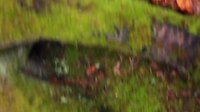»Gendering Marteloscopes«
Zum AnfangAn integrative approach to [Bio-]DiversityGendering Marteloscopes
Using the tablet
the economic value of a tree, measured quantitatively in euros. The size, growth and the kind of tree play a role here.
The ecological value of a tree can also be estimated. This depends on the qualitative features of a tree as an individual potential habitat. What structures does the tree exhibit? Are there broken or dead branches, or fissures in the bark perhaps? Is it likely that a woodpecker might settle in a cavity or could rare kinds of insects live here? What lichens and moss are to be found?
The visibility of the values is paramount. Which values can be regarded as equivalent, or evaluated as being higher or lower?
Videography on the diversity
Perspectives and evaluationsVideography on the diversity
VideographyExercise I [selection of habitat tree]– Exercise II [selection of profitable Douglas fir]

Literature
Literature

Pyttel, Patrick/Kraus, Daniel/Schuck, Andreas/Krumm, Frank/Bauhus, Jürgen (2018) Mit »Marteloskopen« lehren und lernen, in: AFZ-DerWald 4: 26–29
Link
Integrate+ – Marteloscopes Site
Videography on biodiversity
Biodiversity of flora and fauna
Propagation in the woods
Propagation in the woods

»Linnaeus’ classification did not depend so much on natural conditions but far more on the projection of patriarchal sexual concepts, whereby he focuses on ›active‹, ›stamens‹, (penis), and ›passive‹, ›stigmata‹ (vulva), ›pistils‹ or ›carpels‹ (vagina) with connotations of heightened ›feelings of shame‹.« (Termeer 2005, 122) This leads to a hierarchical (hetero-)sexualisation of plants.
Linnaeus »interpreted nature through the prism of social relationships, so that the new botanic idiom incorporated the same basic conditions pertaining to the social as to natural world.« (Schiebinger 1995: 34) Within the framework of Linnaeus’ taxonomy the sexuality of plants was related to »being wed« and to marriage (Schiebinger 1995: 43; cf. also 1996). An approach that looks at these human-nature relationships and thus makes an issue of the dichotomy of culture and nature is that of Queer Ecologies. The Queer Ecologies approach raises questions about »(…) the ›naturalness‹ of biological reproduction processes and the production of life:« (Bauhardt 2012, 10) This also involves casting doubt on gender hierarchies in the division of labour, the purported female responsibility for social reproduction and the legitimation of this through ›naturalness‹ (cf. Bauhardt 2012). »The queer perspective on natural social relationships throws into question any recourse to natural conditions, since the view of ›nature‹ is always preconditioned by the social construction of the two-gender system and assumptions about the ›naturalness‹ of heterosexual reproduction.« (Bauhardt 2012, 11)
Literature
Literature

Schiebinger, Londa (1995) Am Busen der Natur: Erkenntnis und Geschlecht in den Anfängen der Wissenschaft. Aus dem Englischen von Margit Bergner und Monika Noll. Stuttgart: Klett Cotta
Schiebinger, Londa (1996) The Loves of the Plants. In: Scientific American, 274(2): 110–115
Termeer, Marcus (2005) Die Verkörperung des Waldes. Eine Körper-, Geschlechter- und Herrschaftsgeschichte. Bielefeld: Transcript
[Bio-]Diversity – an integrative approach
[Bio-]Diversity
[Bio-]Diversity

Literature
Literature

Subramaniam, Banu/Schmitz, Sigrid (2016) Why We Need Critical Interdisciplinarity: A Dialogue on Feminist Science Technology Studies, Postcolonial Issues, and EcoDiversity. In: Freiburger Zeitschrift für Geschlechterstudien 22(2): 109–122
Production & Design
Production & Design
Production & Design

is an offshoot of the cooperative project
Gendering MINT digital
funded by the Federal Ministry of Education and Research
Gendering MINT digital
Responsibility for the content lies with the authors
Funding reference number
01FP1721, 01FP1722, 01FP1723
Production team and design
Albert-Ludwigs-Universität Freiburg
Dr. Marion Mangelsdorf
Isabell Schaub
Simon Schwab
Victoria Vonau
Hochschule Offenburg
Prof. Daniel Fetzner
Stefan Salm
Zaid Ghasib
With thanks
to the creators of the Marteloscope
Daniel Kraus, Frank Krumm & Andreas Schuck
cooperation partners at the Albert-Ludwig-University of Freiburg
Bettina Joa
Ronja Mikoleit
Patrick Pyttel
The students
Lioba Martin, Student of Soziology, who worked as a research assistant for the project together with Isabell Schaub
Photo from left to right Stefan Salm, Simon Schwab und Zaid Ghasib





















 Into
Into
 Gendering Marteloscopes
Gendering Marteloscopes
 Using the tablet
Using the tablet
 Using the tablet
Using the tablet
 Videography on the diversity
Videography on the diversity
 Videography
Videography
 Description of exercise I
Description of exercise I
 Deadwood and habitat trees
Deadwood and habitat trees
 Bark structure in a habitat tree
Bark structure in a habitat tree
 Description of exercise II
Description of exercise II
 To harvest or not to harvest?
To harvest or not to harvest?
 Biodiversity of flora and fauna
Biodiversity of flora and fauna
 [Bio-]Diversity
[Bio-]Diversity
 Production & Design
Production & Design
